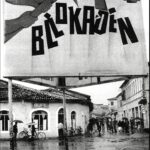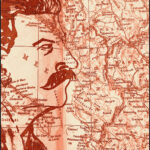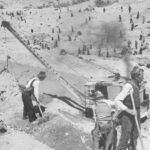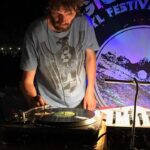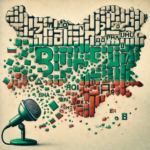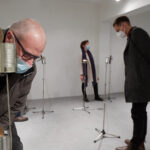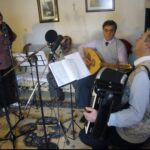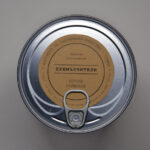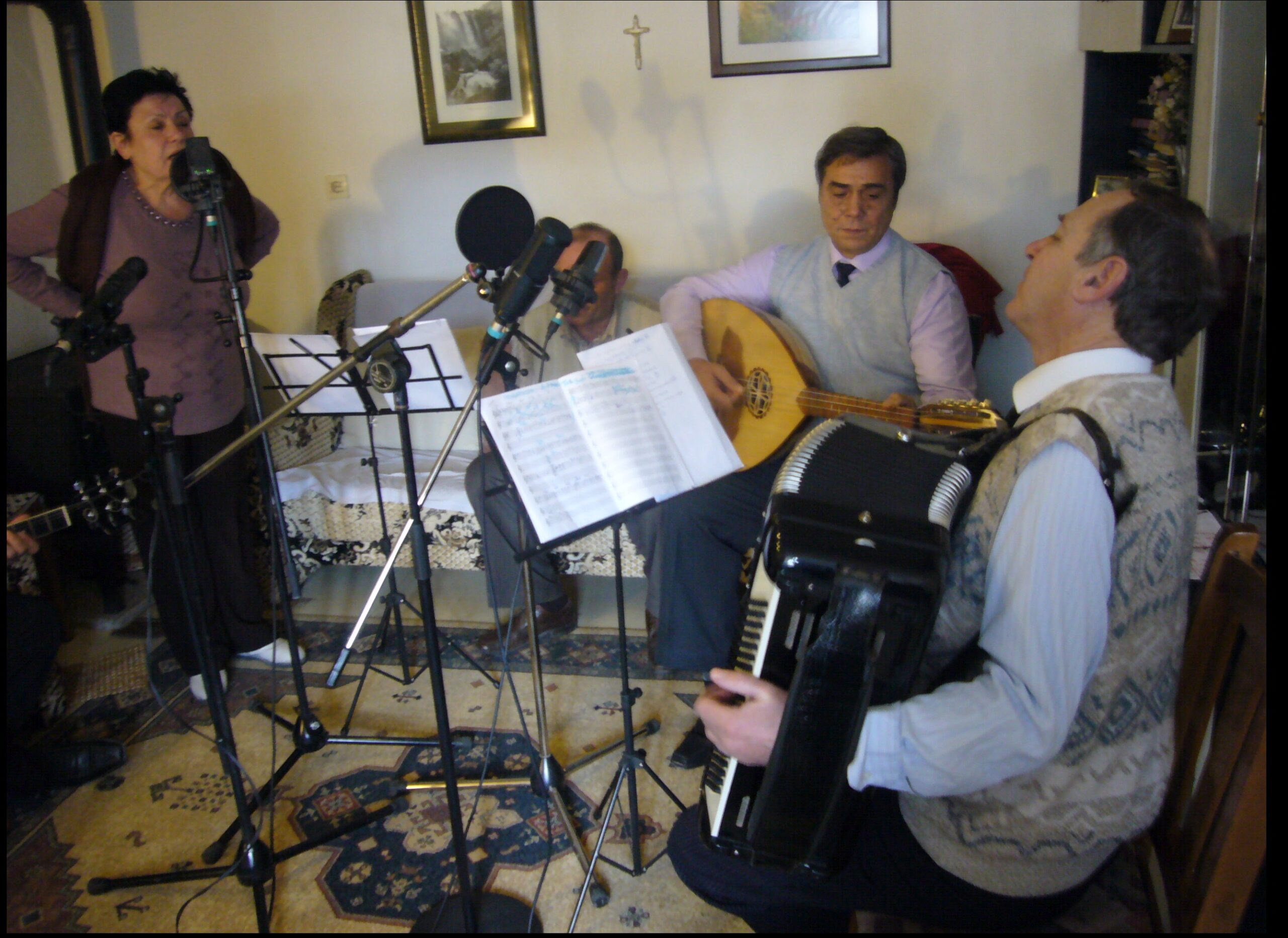Paths of investigation, paths of understanding
Urban Music practices in Albania
When I first read the topic for this meeting: “Wind of Change? Academic & Artistic Perspectives on Experiences of Change in SEE”, I got particularly enthralled by the three outlined dimensions: time, space and culture. The reason for that was because they have permeated my research work in many ways. From more than 13 years by now, I have been focused in the study of urban music practices in Albania. So, I perceived this call for papers as an opportunity for a reflection regarding these three dimensions and the field I have been working on.
Researching urban music practices in Albania
Various music and cultural influences: ottoman, western, as well as local idioms have contributed in shaping a number of urban genres that took a proper identity during the first half of the 20th century. This more in particular for the cities of Shkodra, Korça, Elbasan, Berat, and also Gjakova (now in Kosovo). Traces of these practices go back even before the 18th century (Ballgjati 2019, 77-100). Yet, their study occupied a discrete space in Albanian music studies during the communist period.
In 2010, I started my PhD research on Korça’s song (Kënga korçare), a byproduct of the confluence of Western musical idioms, Ottoman and traditional local forms of expression. The thematic focus of the songs is love, loss, grief, or nostalgia, with a melodic line easily doubled by other voices. The songs are accompanied by chordal harmonies from a guitar, mandolin, accordion. In the early 1970s, the regime banned one of the most popular practices of these songs: the street serenading. Only a male ensemble was estimated as “politically correct” for performing. At the moment, I started this research, the interest in the study of urban music practices had already given the first results. Among these, should be mentioned the work of Eno Koço (2003; 2004) as well as an international symposium held in 2006, in Tirana: Urban Music in the Balkans. Drop-Out Ethnic Identities or a Historical Case of Tolerance and Global Thinking? (Shupo 2006).
The Institute of Cultural Anthropology and Art Studies in Tirana [now the Institute of Anthropology] started to relocate this research topic by the end of 2000s. There were individual research projects such as those of Armanda Kodra Hysa’s on an ethnographic level, with çarshia/the baazar and those of Edmir Ballgjati on an ethnomusicological level with theaheng genre of Shkodra. The latter was based on Makam and had a codified performative model, which came out of use by the mid 1950s (Ballgjati 2014; 2019; 2022).
The Institute had represented the institutionalized ethnomusicological and anthropological knowledge during the second half of the 20th century, focusing particularly in the rural life and rural-based music practices. The latter were considered as “authentic” and “pure” in comparison to the urban-based ones. Therefore, the perspective on the urban embarks signs of a change, although not specifically so outspoken. It grew from individual projects within the Institute to collective research projects. Such is the case of LAU – Laboratory of Urban Anthropology that was initiated in the mid 2010 by the Department of Ethnology.
My second research project on urban music practices in Albania started in 2014. I started working at the then Institute of Cultural Anthropology, with a research project about the songs of Elbasan, a city in central Albania, imbued with a very sedimented cultural texture (ottoman, byzantine, traditional expressive culture from the rural areas). The most distinguished author has been Isuf Myzyri (1881-1956), a musician from the Bektashi order and to whom have been attributed a number of songs now considered as “classics” of Elbasani’s repertoire. Through research in the audiovisual archive of the Institute, I traced also records that have been done from the early 1960s until the late 1980s. These materials did not have a current circulation. The latter were mostly male songs, performed without music accompaniment and distinguished by a very melismatic singing style.
Time
My research on these urban practices has been conceptualized within a sort of divisive line between the communist past and the post-communist actuality. Thus, time dimension became intrinsic to such work. Repertoires and genres that belonged to this past were investigated. Yet the present was ubiquitous:
- by doing ethnographic work from a present and in the present;
- by building trajectories through which the study of sounds that belonged to a given moment of the past could relate to present realities of music practices;
- by developing approaches that could reconstruct sounds of the past, in a combination between research, documentation and artistic work.
Parallel with time, place and space have served as two theoretical threads in the investigation of these repertories. For that, I have followed the interpretive line of Edward Casey. Casey considered place as:
“a plenary presence permeated with culturally constituted institutions and practices. As the basis of the collective as well as individual habitus, these institutions and practices pervade the bodies of sensing objects in a given place as well as the gathering power of the place itself [..] As places gather bodies in their midst in deeply enculturated ways, so cultures conjoin bodies in concrete circumstances of emplacement.” (Casey 1996, 46)
The research was rooted in two specific places, Korça and Elbasan. Departing from this place-oriented perspective, have been sorted out spaces of musical practices within urban geographies. The reason for that was to explore that being in place of both the individual and the collective, either as state institutionalized scenes, or informal and private contexts; either as presentational performances or participatory ones (in Thomas Turino’s perspective). Each on their own way, have played a specific role in shaping the strong sense of belonging to the city that the inhabitants have towards the songs, even acknowledging that the repertoires were not “autochthonous”.
The archive was also integral of this place-oriented perspective. Music practices have entered this place for being saved, secured, and then selected for being studied. The status of the archive as a sort of sarcophagus did not put me in the position of someone that has entered a space to pick up some materials from the shelves. Rather, that was a lived experience. Through listening and “aural” conceptualization (Occhoa Gautier 2014), I was exploring “the lives” of these records. It was a “lived listening experience” for analyzing the ways that these records were produced, the people that produced them – either performer or researcher, and the life of the record itself. It can be observed that the archive was a sort of border line between an ethnomusicology of aural representation, that extracted a living memory, with the scholar that went to the field, recorded collections of music records; and an ethnomusicology of the archival artefact, an ethnomusicology of the literary, where the scholar transcribed and analyzed this material (Minga 2020, 200).
Culture
A number of contributions have already tackled the ways ethnographical knowledge has perpetuated the ideological programs of the Albanian communist regime (see more in particular Bardhoshi and Lelaj 2015). Following this critical perspective, I opted for a path that was focused on sound and voice as an instrument of understanding and through such perspective get to the individual: be that the musician/performer, or the scholar. This led me to focus on individuals as case-studies; artists and performers whose agency has been determinant in the existence of these urban expressions. Such is the case of Spanja Pipa (1938), a well-known protagonist of Korça’s song, actress and singer, whose repertoire has never been documented until the early 2010, when we recorded her, in a combination between research documentation and artistic work.
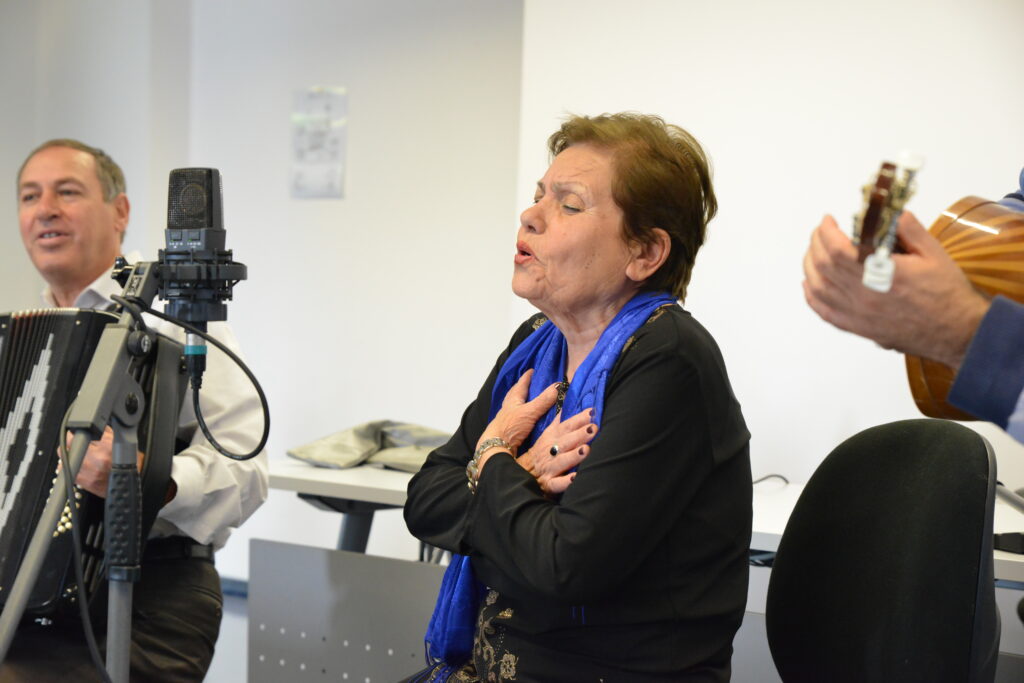
Spanja Pipa, Josif Minga, during a musical presentation. Milan, october 2015. (c) Lorenzo Pisanello
We did not record her in the studio and used no electronic arrangements as has been usual after the 1990s. Instead, aimed to revive the “original” acoustic sound of Korça’s song before the 1990s, while bringing a female perspective in a largely male based practice (Minga and Scaldaferri 2015). For what concerns the archival records, I opted for the humanization of the artefact, as Howard Zinn has suggested (1977, 14-26). An illustration for that is the work with the voice records of Vasil Todri (1903-1967), who has been recorded in Elbasan in 1966. The archive had very little information about the protagonists recorded. In this case, just the profession and the age. So, I worked on building what I called “voice portraits”. From the voice I heard, I tried to build the profile of this protagonist, by getting into contact with his heirs. The latter did not even know that he has been recorded. The most emotional moment was when his 80 years old daughter listened to his voice and exclaimed: “Më ngjalle babanë”, (you brought my father alive/you resurrected my father) and also his niece, Shpresa Todri. Besides this emotional level, Todri’s biography disclosed also interesting details of him as an amateur musician and as one of the most distinguished singers in the repertoire of “old Elbasan songs”, known also as “ashik songs”.
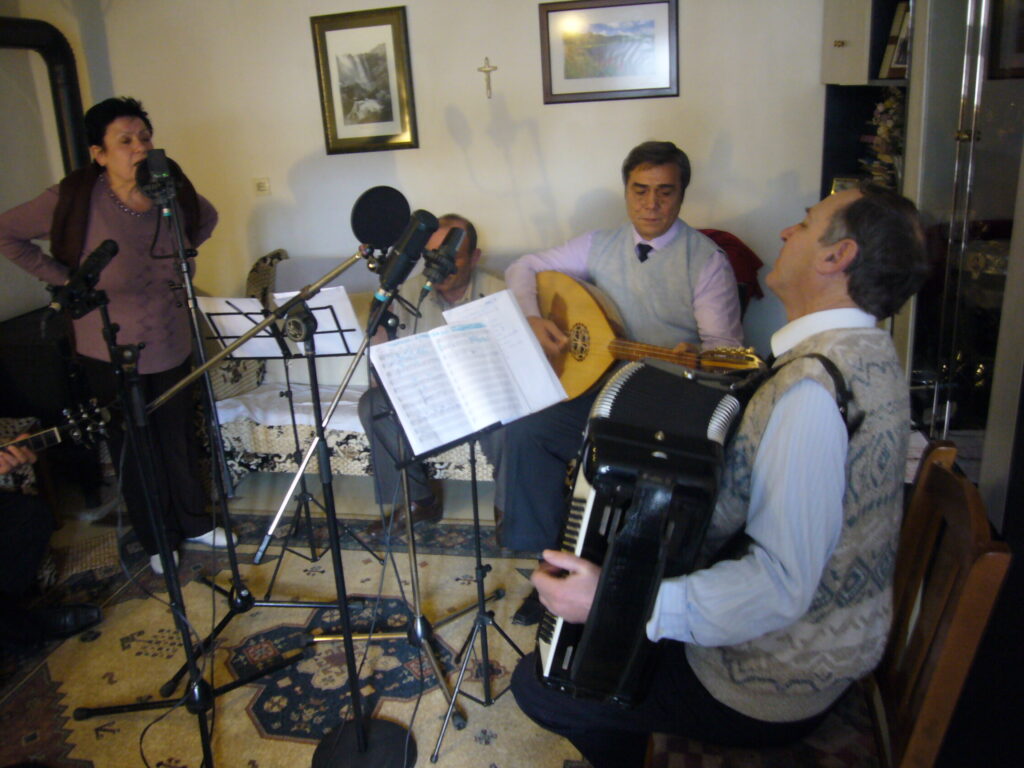
During the recording session, January 2013. (c) Mikaela Minga
By way of conclusion, I would say that the study of urban music practices in Albania has represented a path for building a transformative perspective in the research field of ethnomusicology in Albania. Such perspective is valuable for opening ethnomusicological scholarship towards contemporary research contexts, such as the Albanian popular music scene, and also for providing a critical perspective regarding ethnomusicological knowledge during the communist period. In the end, it should be underlined that the music realities that evolved after the 90s, cannot be investigated without a careful consideration of the ones that preceded them.
Bibliography
Ballgjati, Edmir. 2014. Kënga qytetare shkodrane: nga “ahengu” tek “kënga qytetare“. Tezë doktorature. Tiranë: Qendra e Studimeve Albanologjike.
Ballgjati, Edmir. 2019. “Mbi krijimtarinë e Molla Hysen Dobraçit.” Antropologji 2 (1): 77-100.
Ballgjati, Edmir. 2022. Ahengu shkodran: notizimi i plotë. Tiranë: Akademia e Studimeve Albanologjike.
Bardhoshi, Nebi and Olsi Lelaj. 2018. Etnografi në diktaturë: Dija, shteti dhe holokausti ynë. Tiranë: Akademia e Shkencave.
Casey, Edward S. 2006. “How to Get from Space to Place in a Fairly Short Stretch of Time. Phenomenological Prolegomena.” In Senses of Place, edited by Steven Feld and Keith H. Basso, 13-52. Santa Fe: School of American research Press.
Koço, Eno. 2003. Kënga Karakteristike Korçare. Tiranë: Toena.
Koço, Eno. 2004. Albanian Urban Lyric Song in the 1930s. Lanham, Md.: Scarecrow Press.
Minga, Mikaela and Nicola Scaldaferri. 2015. Spanja Pipa e la canzone urbana di Korça. Roma: Squilibri.
Minga, Mikaela. 2020. Tinguj që rrëfejnë; tinguj që rrëfehen. Tiranë: Akademia e Studimeve Albanologjike.
Shupo, Sokol ed. 2006. Urban Music in the Balkans. Drop-Out Ethnic Identities or a Historical Case of Tolerance and Global Thinking? Papers of the International Symposium 28.9-1.10.2006. Tiranë: ASMUS.
Ochoa Gautier, Ana Maria. 2014. Aurality: Listening and knowledge in nineteenth century Colombia. Durham, NC: Duke University Press.
Zinn, Howard. 1977. “Secrecy, Archives, and the Public Interest.” Midwestern Archivist 2:2: 14-26.




